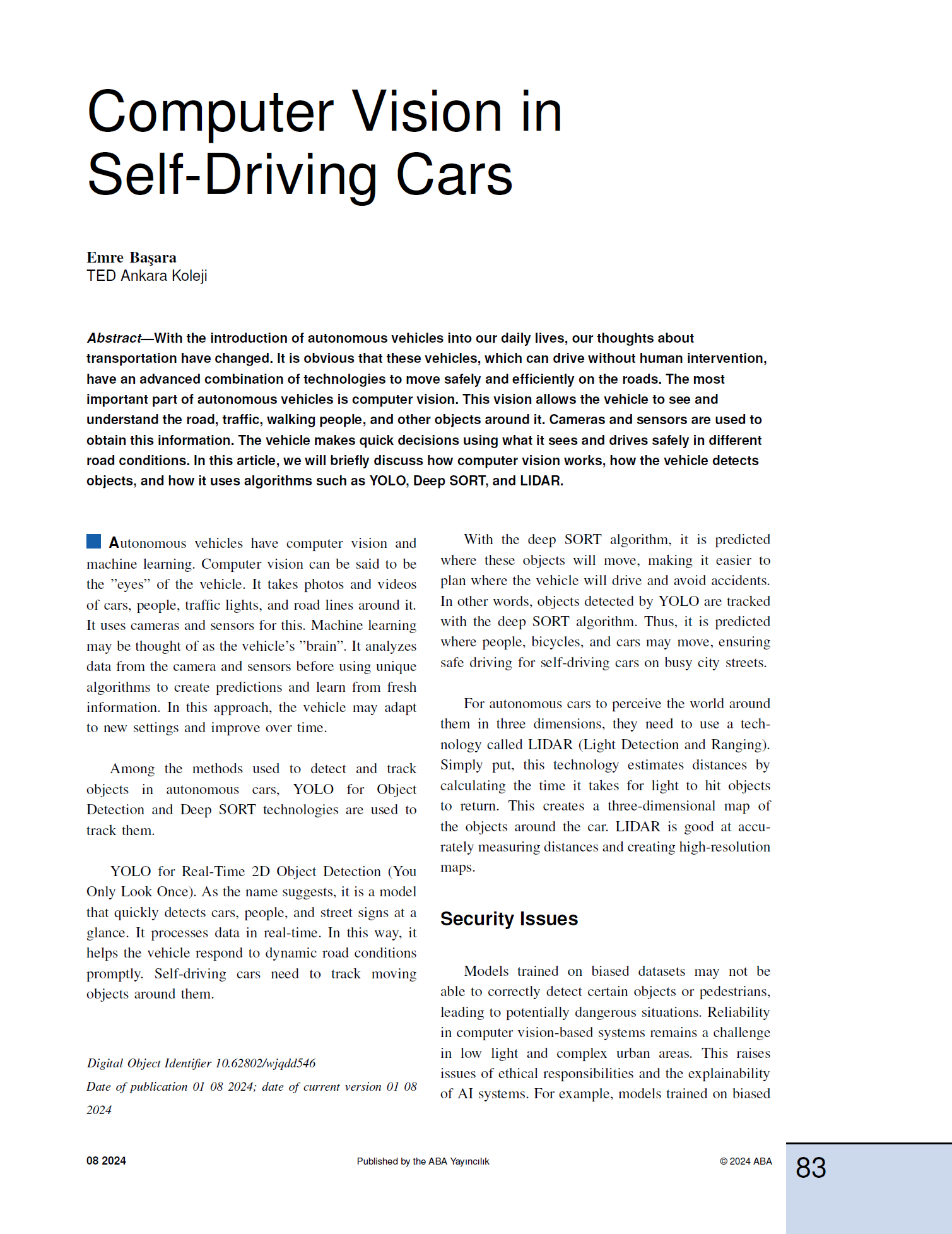Computer Vision in Self-Driving Cars
DOI:
https://doi.org/10.62802/h1prr610Keywords:
autonomous vehicle, self-driving cars, machine learning, computer visionAbstract
With the introduction of autonomous vehicles into our daily lives, our thoughts about transportation have changed. It is obvious that these vehicles, which can drive without human intervention, have an advanced combination of technologies to move safely and efficiently on the roads. The most important part of autonomous vehicles is computer vision. This vision allows the vehicle to see and understand the road, traffic, walking people, and other objects around it. Cameras and sensors are used to obtain this information. The vehicle makes quick decisions using what it sees and drives safely in different road conditions. In this article, we will briefly discuss how computer vision works, how the vehicle detects objects, and how it uses algorithms such as YOLO, Deep SORT, and LIDAR.References
Kanchana, B., Peiris, R., Perera, D., Jayasinghe, D., & Kasthurirathna, D. (2021, December). Computer vision for autonomous driving. In 2021 3rd international conference on advancements in computing (ICAC) (pp. 175-180). IEEE.
Joel Janai, Fatma Güney, Aseem Behl and Andreas Geiger (2020), "Computer Vision for Autonomous Vehicles: Problems, Datasets and State of the Art", Foundations and Trends® in Computer Graphics and Vision: Vol. 12: No. 1–3, pp 1-308. http://dx.doi.org/10.1561/0600000079
L. Liu et al., "Computing Systems for Autonomous Driving: State of the Art and Challenges," in IEEE Internet of Things Journal, vol. 8, no. 8, pp. 6469-6486, 15 April15, 2021, doi: 10.1109/JIOT.2020.3043716


